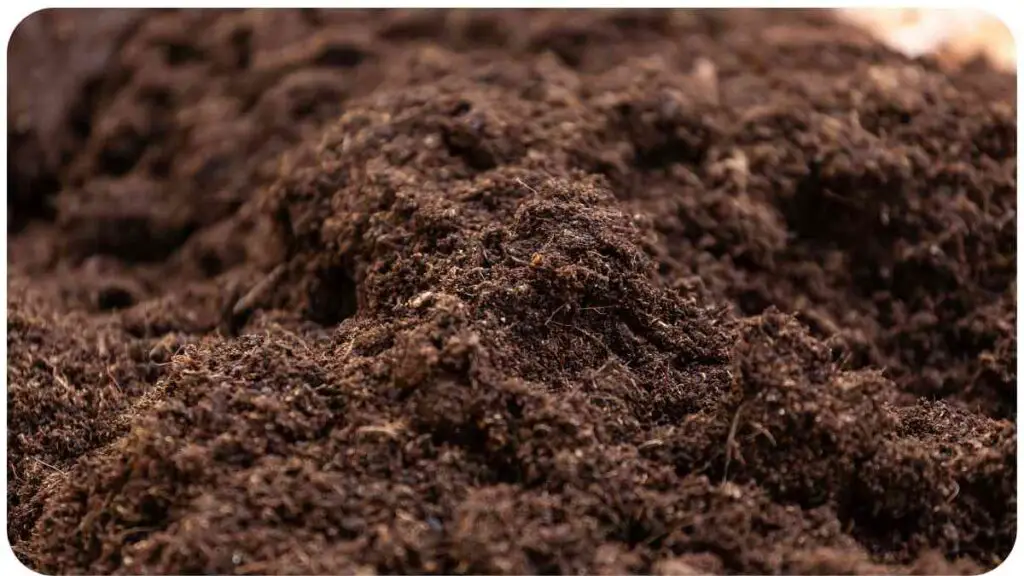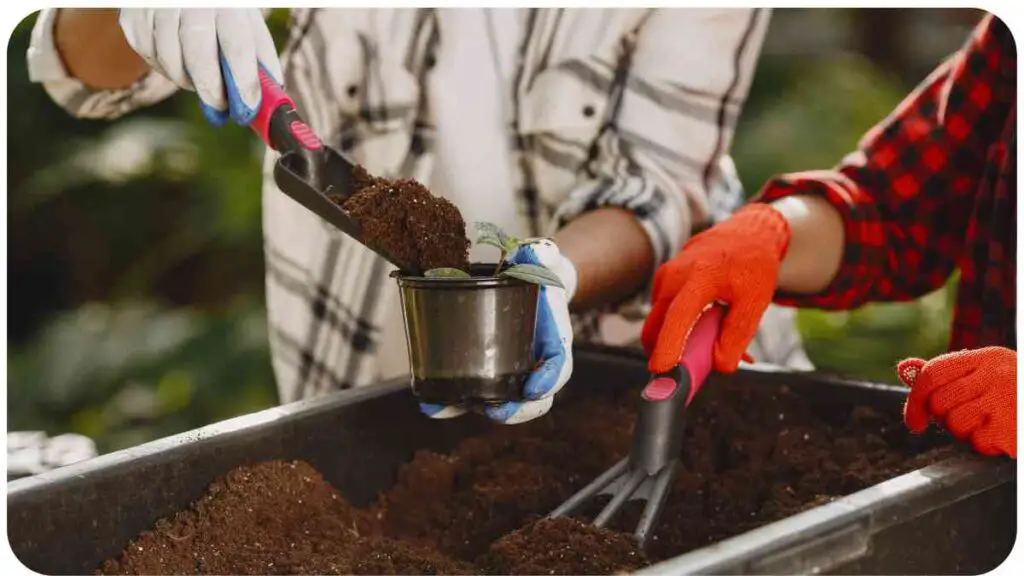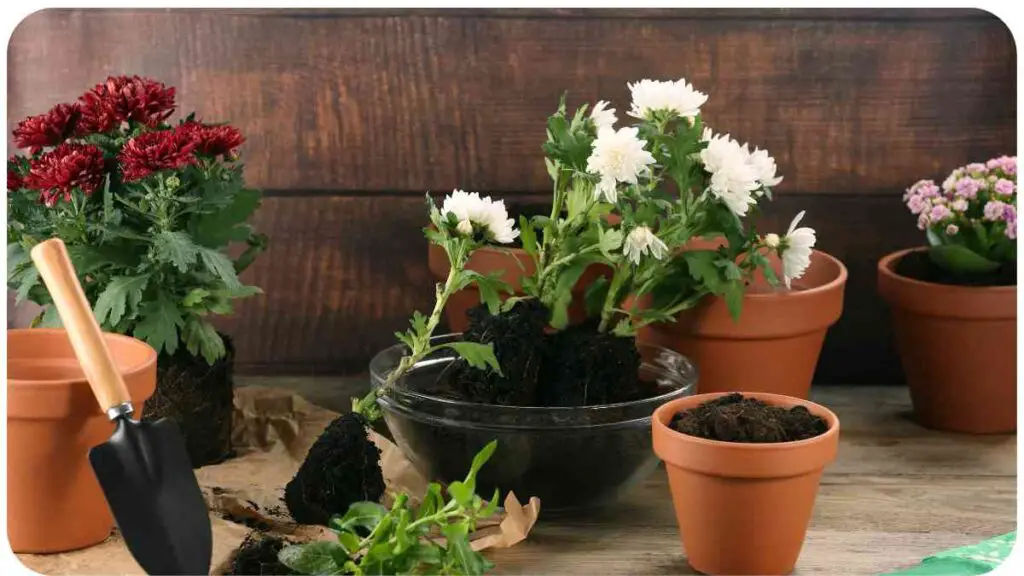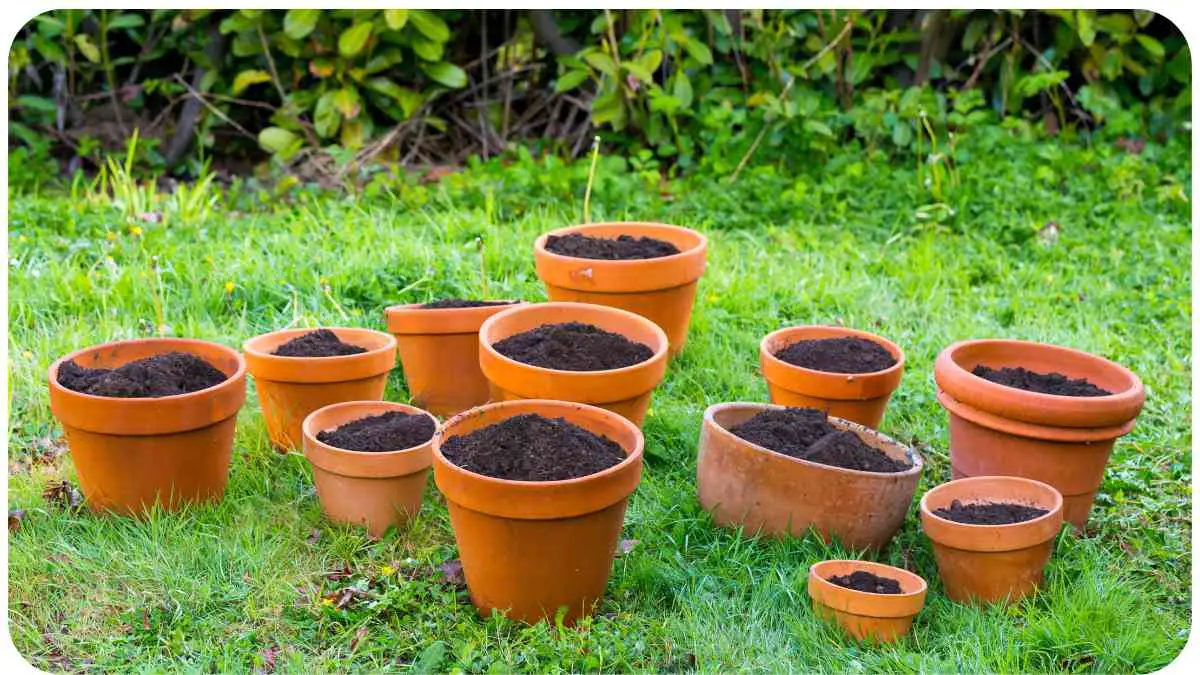Are your plants not thriving as they used to? It might be time to give your potted green friends a soil makeover! In this guide, we’ll explore the ins and outs of replacing potting soil, ensuring your plants get the fresh start they deserve.
| Takeaways |
|---|
| Regularly replacing potting soil promotes healthy plant growth and prevents issues like root-bound plants. |
| Choosing the right potting soil blend is essential for providing adequate nutrients and drainage for your plants. |
| Properly preparing containers and cleaning them before adding new soil helps prevent the spread of pests and diseases. |
| Pay attention to signs that indicate it’s time to replace potting soil, such as poor drainage, foul odor, or stunted plant growth. |
| Don’t forget to inspect your plants’ roots during the repotting process and trim any damaged or rotting roots for optimal plant health. |
2. Understanding Potting Soil

Potting soil is not your typical garden soil. It’s specially formulated to provide the right balance of nutrients, aeration, and moisture retention for potted plants. Understanding its composition and role is crucial before embarking on a soil replacement journey.
Calculating the right amount of potting soil for large containers can be tricky. It’s crucial to ensure proper soil volume for optimal plant growth and root development. Over or underestimating can impact plant health and longevity.
| Component | Function |
|---|---|
| Peat Moss | Retains moisture and improves soil texture |
| Perlite | Enhances drainage and aeration |
| Vermiculite | Improves water retention |
| Compost | Adds nutrients and improves soil structure |
| Sand | Provides stability and drainage |
3. Signs It’s Time to Replace Potting Soil
Over time, potting soil can become compacted, depleted of nutrients, and host harmful pathogens. Here are some signs that indicate it’s time for a soil change:
| Signs |
|---|
| Poor Drainage |
| Foul Odor |
| Mold Growth |
| Stunted Plant Growth |
| Visible Pests or Weeds |
4. Steps to Replace Potting Soil

Replacing potting soil isn’t rocket science, but it does require some elbow grease and attention to detail. Here’s a step-by-step guide to get you started:
Maintaining healthy plants starts with understanding when to refresh potting soil. Discover best practices for soil replacement intervals to promote thriving plant growth. Regular soil replenishment is essential for sustaining nutrient levels and preventing soil compaction.
Gather Supplies
Before you begin, gather the necessary supplies:
- New potting soil
- Containers or pots
- Trowel or shovel
- Gloves
- Watering can or hose
Prepare Containers
Clean your pots or containers thoroughly to remove any residue or pathogens.
Remove Old Soil
Carefully remove the old soil from the containers, shaking off excess debris.
Clean Containers
Wash the containers with a mild soap solution to disinfect them.
Add New Soil
Fill the containers with fresh potting soil, leaving enough space for the plants.
Revitalize old potting soil to extend its usability and enhance plant performance. Learn effective techniques for rejuvenating depleted soil, ensuring optimal nutrient availability and soil structure. Reusing soil responsibly reduces waste and supports sustainable gardening practices.
5. Choosing the Right Potting Soil

Not all potting soils are created equal. It’s essential to choose the right blend for your specific plants’ needs. Here’s a comparison of some popular potting soil brands:
| Brand | Composition | Best For |
|---|---|---|
| Miracle-Gro | Peat moss, perlite, compost | General use |
| FoxFarm | Coco coir, perlite, earthworm castings | Organic gardening |
| Espoma | Peat moss, perlite, humus, earthworm castings | Container gardening |
Tips for Successful Potting Soil Replacement
- Choose the Right Time: Spring or early summer is the ideal time to replace potting soil when plants are actively growing.
- Inspect Roots: Take this opportunity to inspect your plant’s roots. Trim any damaged or rotting roots before repotting.
- Use Quality Soil: Invest in high-quality potting soil to give your plants the best chance of success.
- Consider Amendments: Depending on your plant’s needs, you may want to add amendments like perlite or compost to improve soil structure.
- Water Properly: After repotting, water your plants thoroughly to help them settle into their new homes.
Choosing the right potting mix is crucial for promoting healthy flower growth. Explore key considerations when selecting potting mixes to meet the specific needs of different flower varieties. The right mix provides essential nutrients and promotes proper drainage for flourishing blooms.
Common Mistakes to Avoid
- Overwatering: One of the most common mistakes is overwatering newly potted plants. Ensure proper drainage to prevent waterlogged soil.
- Ignoring Drainage Holes: Always use containers with drainage holes to prevent water buildup, which can lead to root rot.
- Reusing Old Soil: While tempting, reusing old potting soil can introduce pests, diseases, and nutrient deficiencies to your plants.
- Not Allowing for Growth: Leave enough space in the pot for your plants to grow and expand their root systems.
6. FAQ About Potting Soil Replacement
Q: How often should I replace potting soil?
A: It’s recommended to replace potting soil every 1-2 years, depending on the plant’s needs and signs of soil deterioration.
Q: Can I reuse old potting soil?
A: While you can reuse old potting soil with proper sterilization and amendment, it’s often best to start fresh for optimal plant health.
Q: What can I do with old potting soil?
A: You can compost old potting soil or use it as a soil amendment in your garden beds.
Q: Can I mix different potting soils together?
A: Yes, you can mix different potting soils to create a custom blend tailored to your plants’ needs.
7. Conclusion
Replacing potting soil is a simple yet essential task for maintaining healthy, thriving plants. By following the steps outlined in this guide and paying attention to your plants’ needs, you can ensure they have the best growing environment possible. Here’s to happy plants and green thumbs!
Now that you know the ins and outs of replacing potting soil, your plants will thank you with vibrant growth and lush foliage. Don’t wait until it’s too late give your plants the fresh start they deserve today!
Further Reading
- The Sill: Plant Care – Repotting: Learn essential tips for repotting your plants to promote healthy growth and prevent root-bound issues.
- Gardening Know How: How to Refresh Potted Plants: Discover methods for revitalizing your potted plants to ensure they continue to thrive.
- Oklahoma State University Extension: Reusing Potting Soil: Find out how to effectively reuse potting soil while maintaining plant health and soil quality.
FAQs
How often should I repot my plants?
Repotting frequency depends on various factors such as plant type, pot size, and growth rate. Generally, it’s recommended every 1-2 years.
Can I reuse old potting soil?
While you can reuse old potting soil with proper sterilization and amendment, it’s often best to start fresh for optimal plant health.
What should I do if my plants are root-bound?
If your plants are root-bound, it’s crucial to repot them into larger containers to prevent stunted growth and nutrient deficiencies.
How do I know if my plants need repotting?
Signs that your plants need repotting include roots growing out of drainage holes, water not draining properly, and slowed growth.
Can I mix different types of potting soil?
Yes, you can mix different types of potting soil to create a custom blend tailored to your plants’ specific needs.

For 15 years, Hellen James has worked in the gardening industry as an expert and landscape designer. During her career, she has worked for a variety of businesses that specialize in landscaping and gardening from small firms to large corporations.

